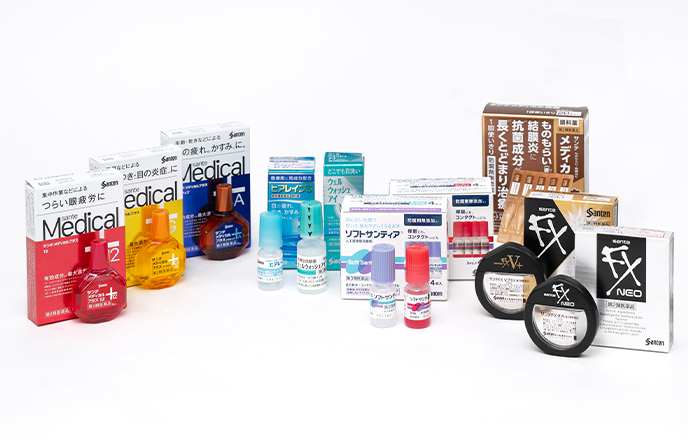It is generally accepted that visual function declines with age. Moreover, glaucoma, which is the leading cause of premature blindness among Japanese people and is said to affect 1 in 20 people over 40 and 1 in 10 people over 70, has few subjective symptoms until the disease has progressed considerably.
Said TdR: “We hope that encouraging drivers to have eye exams—for example, if employers allow and even recommend that drivers visit their eye care professional during working hours—then this will further raise awareness of the driving risks associated with vision impairment and lead to more concrete efforts to resolve these problems.”
Driver health management is a priority issue not only for business management, but also in terms of reducing social and economic opportunity loss. It is important for the industry and society as a whole to further raise awareness of this issue so that consumers can live with peace of mind.
Recently, traffic accidents attributed to driver health or advanced age have become a continuing social issue. It is said that 80% of the information we obtain is through our vision, so a decline in eye function or disease can lead to serious accidents. For example, research has shown1 that people with glaucoma, which can progress to blindness, are about seven times more likely to have automobile accidents than people with normal vision. Eye defects and problems are a risk factor that drivers cannot afford to overlook.
1 Haymes SA, et al. Risk of falls and motor vehicle collisions in glaucoma. 2007
In March 2022, the Ministry of Land, Infrastructure, Transport and Tourism in Japan introduced its Manual for Countermeasures for Visual Field Impairment in Motor Vehicle Transport Operators (Japanese only), which in addition to sleep apnea syndrome, cerebrovascular disease, and heart and macrovascular disease, educates drivers about the risks related to visual field impairment and countermeasures. Although publication of the manual has led to a better understanding of the importance of driver eye health within the transportation industry, specific initiatives by operators are still a trial and error process and remain a management issue.
In this issue, we interviewed Mr. Takuma Kawamoto and Ms. Chiaki Takahashi of Tokio Marine dR Co., Ltd. (TdR), which provides solutions for transportation operators that teach them about driving risks related to visual field impairment and proper maintenance of driver eye health. We asked them about their specific efforts and future challenges, and here is what they had to say.
Promoting Accident Prevention for Professional Drivers with “Safety Guidance and Education Know-how x Expertise in Ophthalmology”
Leveraging its strengths in data-based risk analysis and the introduction of safety management systems, TdR’s Transportation & Mobility Consulting Dept. provides consulting services on traffic accident prevention and transportation safety improvement.
Applying the safety guidance and education know-how that it has cultivated over many years, TdR supports “the introduction of eye health management systems, from raising awareness of visual field impairment to recommending eye examinations,” and the use of the Santen OptiNavi® tool, a self-check system for four eye diseases (dry eye, glaucoma, age-related macular degeneration, and cataracts) developed by Santen, a company specialized in ophthalmology.
Discovering, as the result of using the program, that a driver has eye problems may be difficult for both the operator and the driver to accept. However, if eye diseases and problems can be detected at an early stage and visual function can be preserved through appropriate treatment, then the outcome may be a long and safe career. For this reason, TdR is committed to creating a system that can alert operators to the driving risks of visual field impairment and encourage them to undergo eye exams.
Vision with glaucoma (single eye)
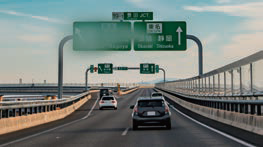
Onset

Progression

Late Stage
Late Stage
<Sorce: Santen OptiNavi®>
* Sample image; actual vision will vary from person to person
Testimonials from Businesses Using the Driver's Eye Health Support Program
Businesses using TdR’s eye health support programs have received the following feedback from drivers:
- This initiative reminded me how important eye health is
- Not only learning about eye diseases, but also finding out about your eye health through self-checks is really convincing
- It gave me the chance to go back to the beginning and review the basics of safety driving checks
- By viewing exams as part of our duties, we may become more proactive about going to the eye doctor
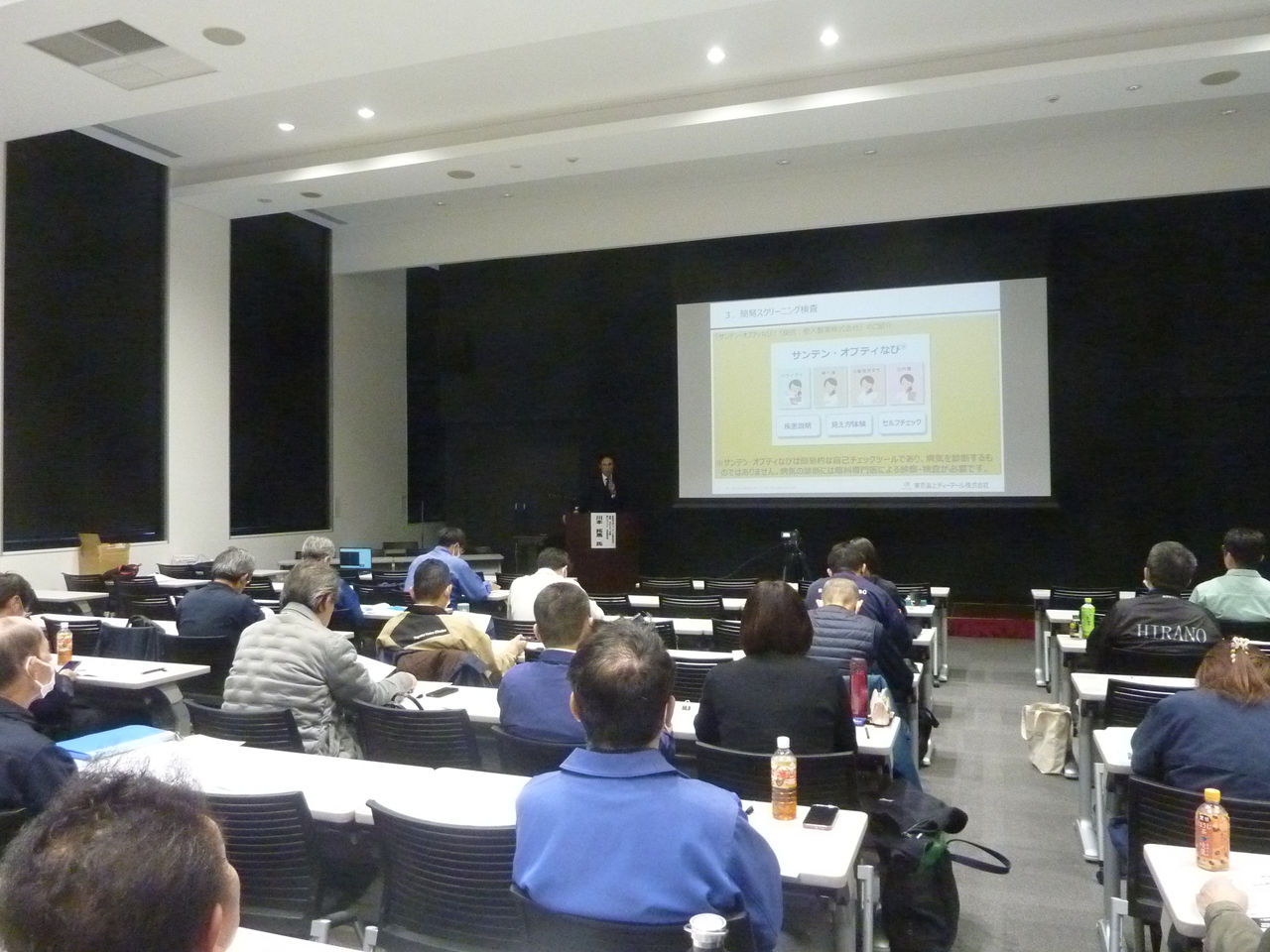
Transportation operators take notes while listening to a seminar by TdR’s Kawamoto
(3rd Accident Prevention Seminar in FY2023 organized by Aichi Trucking Association)
Toward a Society that Pays Greater Attention to Driver Health
Mr. Kawamoto, Senior Consultant in TdR’s Transportation and Mobility Consulting Dept., and Ms. Takahashi, who oversees program operations, also discussed initiatives for the future.
“From time to time I hear about someone who has always been a good driver, but for some reason causes an accident or fails to notice a traffic light, and in these cases, eye disease is thought to be one of the contributing factors,” said Kawamoto. “We would like to raise awareness that supporting driver eye health is an issue that companies should be addressing. To this end, we would like to utilize our strength in data analysis to track when eye examinations and checkups have been performed following self-checks, and to provide quantitative information to businesses regarding the results and effectiveness of those examinations. We will continue to develop and propose services and solutions that help prevent driver-related traffic accidents by working with transportation companies as well as industry associations and automakers to thoroughly understand their issues.”
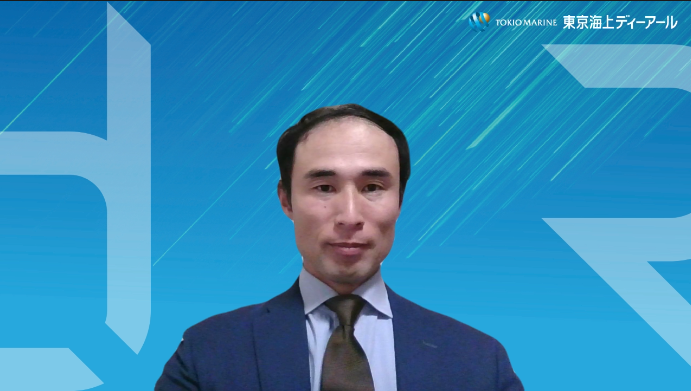
Mr. Takuma Kawamoto, Senior Consultant,
Transportation and Mobility Consulting Dept.,
Tokio Marine dR Co., Ltd.
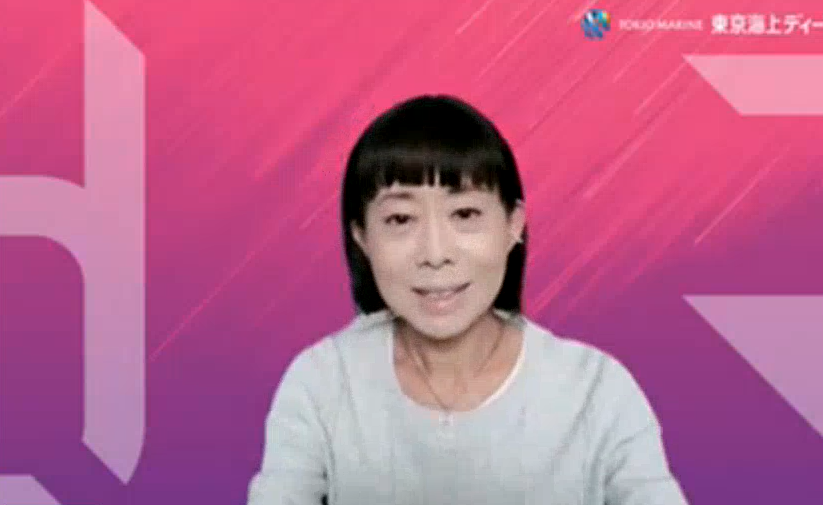
Ms. Chiaki Takahashi,
Transportation and Mobility Consulting Dept.,
Tokio Marine dR Co., Ltd.
“It’s generally understood that the transportation industry faces a serious shortage of labor. I think the key point is how much operators are willing to look at and invest in health support, in addition to driver recruitment and human resource training, to ensure that drivers can continue to drive safely for a long time,” said Takahashi. “For example, to promote regular checkups, eye exams must be institutionalized as part of the business process, and if we can provide evidence backed by data demonstrating that such investment generates medium- to long-term benefits, then we believe that concrete efforts will be made to address the driving risks caused by visual field impairment. We will continue to collaborate with partner companies and support the construction and strengthening of systems that can improve the safety of the transportation industry as a whole.”
World Glaucoma Week: Global Initiative to Raise Awareness of Glaucoma
Glaucoma, which can lead to blindness, can be slowed by early detection and treatment. However, many people in Japan and around the world view glaucoma as “an incurable disease” and tend to ignore it. With the aim of providing as many people as possible with proper knowledge about glaucoma, an awareness campaign, World Glaucoma Week, is held every year in March. This year, the campaign takes place from March 10 (Sunday) through March 16 (Saturday).
Santen agrees with the purpose of World Glaucoma Week, and is conducting a variety of glaucoma awareness campaigns around the world and disseminating information through social networking services and other means. We hope you will take this opportunity to think about the health of your precious eyes.


